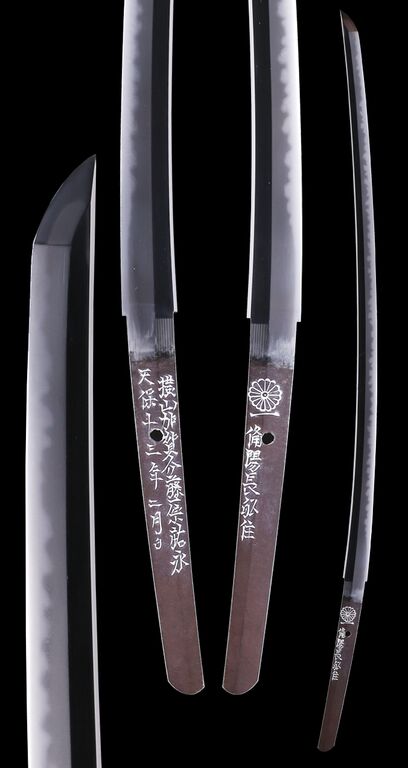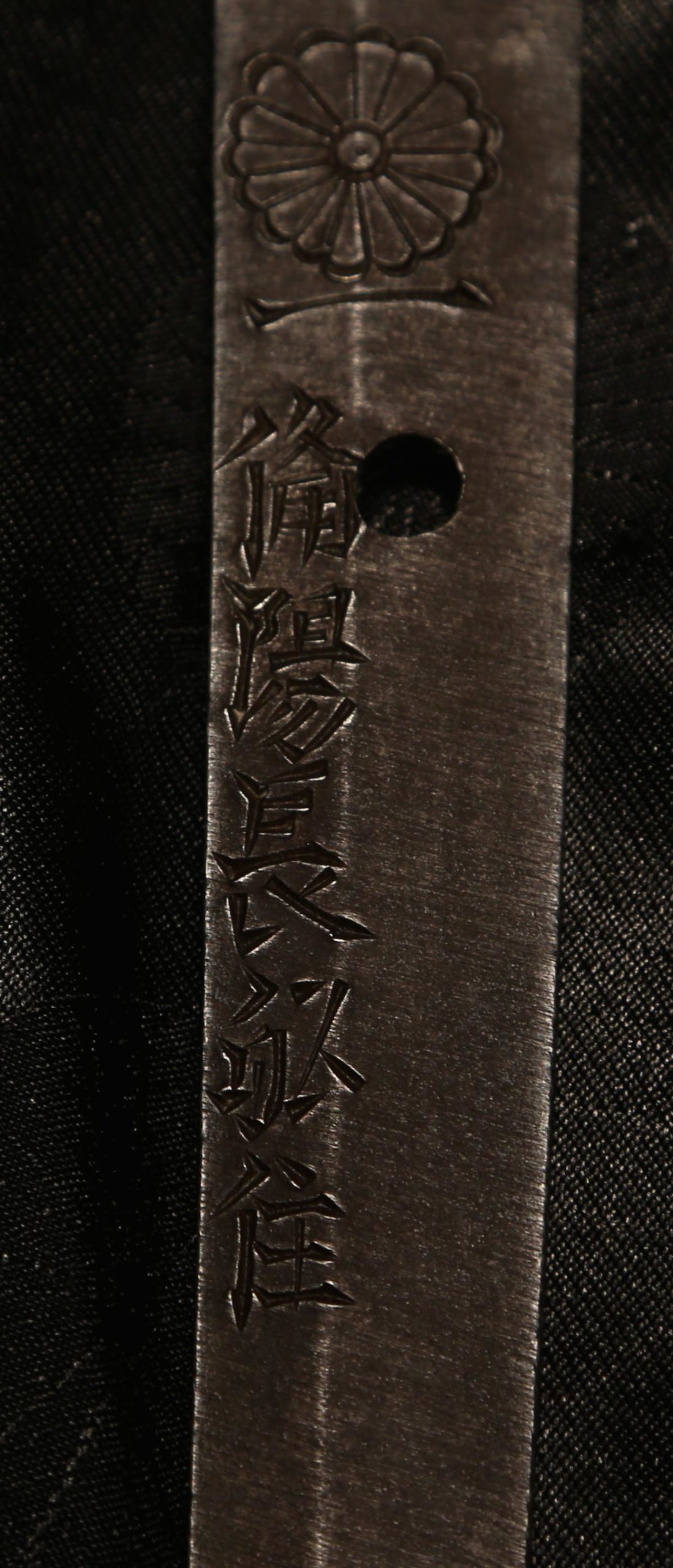Yokoyama Sukenaga Katana
The Bizen tradition of sword craft reigned supreme as the longest and most successful line of smith in Japanese Sword history, spanning over 1200 years of sword manufacture, born with the smith Tomonari in the 10th century AD.
From Tomonari, the successive centuries saw the development of other schools working in the Bizen tradition such as, Ichimonji, Ko-osafune, Kozori, Osafune, Yoshii, Omiya, Sukesada, and the school of this sword; Yokoyama. The quality of works ebbed and flowed with the tides of warfare, with quality yielding to quantity during the dark times of the great civil wars that tore the country apart at the seams. Two calamitous floods also scoured Osafune village twice within a relatively short period and one historic text says that the only smithing family to survive was the Yokoyama family.
It’s no coincidence then that with the transition into the Shinto period a few short years later, that the Yokoyama Sukesada line of smiths occupies a place in sword manufacture, keeping breath of life in their tradition after the decimation of the lines after war and natural disaster. The roots of Bizen sword craft remain in the present day with artisans working in Okayama where the famous origin of “Osafune” town lies at the Bizen Okayama Sword Museum. The Bizen traditions are also a major source of inspiration to many other modern day Japanese swordsmiths.
Kaga no Suke Sukenaga was born in 1794, the second son of Yokoyama Sukehira. Sukenaga boldly declared himself the 56th generation descending directly from Tomonari. Subsequent generations also inscribed their respective generations into the later 19th century. Sukenaga also inscribed the character “Ichi” (meaning “one” and harkening to the days of the Ichimonji school) as well as the Chrysanthemum mon on the nakago of his works. Clearly he was as proud as he was skilled because he was considered the best smith of the school, and produced several highly skilled smiths in their own rights. Sukenaga died in 1851 at the relatively young age of 57.
Sukenaga developed a uniquely stylistic approach to the hallmark “chojiba” or “clove patterned” hamon of their ancestry. Their approach was to create tightly drawn small choji patterns with a thin concentrated habuchi, and an especially peculiar pattern called kobushigata choji, consisting of clumps of tightly bunched choji. Sometimes these are referred to as “fist shaped choji” after the look of the knuckles of a fist having been imprinted along the length of the blade. These patterns became their own hallmark style. Another element of Sukenaga’s hamon is the sugu yakidashi reaching up from the hamachi before becoming choji midare. They also created a very tightly forged ko-mokume jigane to support the hamon pattern. It’s so densely forged that it can be difficult to see and has more of a velvety texture than what one might expect from a Bizen work. Shinshinto works are sometimes noted for being “muji” or having a lack of discernible pattern. Part of this is due to the nature of forging by some smiths that created a pattern so dense that polishing techniques of the time often left it blank to the eye. However, polishing has developed to the point that the finer hada of these makers can be better brought out to the eye.
This katana is a lovely example of the Yokoyama style that Sukenaga established. The sugata is very attractive with an elegant taper and gentle koshizori, and a “koroai” yakiba that is neither too wide nor too narrow thus harmonizing with the shape of the sword and is very pleasing to the eye. The boshi turns back cleanly in maru with a short kaeri.
The nioideki hamon is bright and consistent, and skillfully created with ashi reaching into the yakiba through the entire length of the sword. The nioiguchi reaches across the lobes of the choji in places creating depth and dimension to the yakiba. The polish is a very skillfully rendered sashikomi that illustrates the nature of the jihada and hamon perfectly, and was absolutely the right choice for this sword.
Yokoyama Sukenaga is rated as Josaku in the Fujishiro Shinto Hen.
- Nagasa: 69.2 cm
- Motohaba: 3.0 cm
- Kasane: 6.5 mm
- Sakikasane: 1.9 cm
- Sakihaba: 5 mm
The sword is held in a plain shirasaya, and has a two piece silver habaki. It holds NTHK Kanteisho dated October 1st, 1978.
Crazy Reduction to $7965.00 USD!!! Domestic US shipping included!









